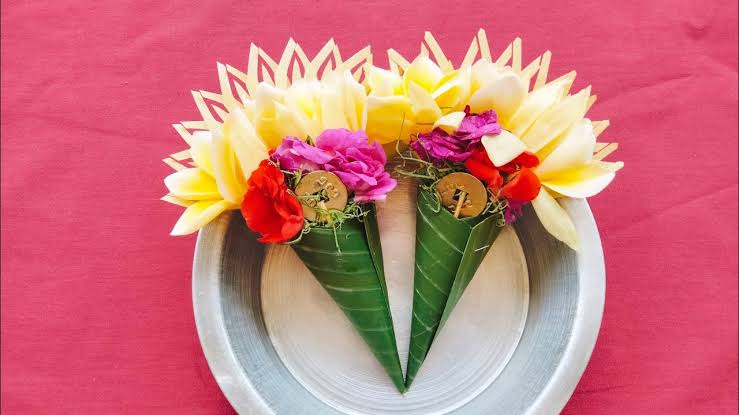In the sacred traditions of Balinese Hinduism, kwangen plays a vital role as a ceremonial offering tool, especially in the context of Panca Yadnya—the five holy sacrifices. Though small in size, kwangen carries deep philosophical and spiritual meanings, making it more than just a ritual object.
What is Kwangen?
Derived from the root word related to “fragrance,” kwangen symbolizes the act of offering a pleasant aroma to honor the divine. It is seen as a medium through which devotees express their sincere devotion to Ida Sang Hyang Widhi Wasa, the Supreme God in Balinese Hindu belief.
Ancient scriptures such as Sri Jaya Kasunu describe kwangen as a symbol of Omkara—the sacred sound “Om,” believed to be the origin of all life. Similarly, in the Upanishads, kwangen is associated with the invisible yet ever-present manifestation of God within the human spiritual journey.
The Symbolic Elements of Kwangen
Each kwangen is carefully crafted using several symbolic components, each with its own spiritual significance:
- Kojong (Banana Leaf)
Kojong forms the outer casing of kwangen. Shaped to taper at the bottom and open at the top like a flower, it represents Ardha Candra or the crescent moon, symbolizing emotional balance and inner peace. - Pis Bolong (Ancient Coin)
This round coin with a hole in the center symbolizes Windhu—the source of energy and balance. Within kwangen, it signifies spiritual centering and serves as a tool of purification during rituals. - Porosan Silih Asih (Betel Leaf with Ingredients)
A combination of betel leaves, areca nut, and lime represents the union of Purusa (masculine principle) and Pradana (feminine principle). This balance reflects harmony between soul and nature. - Plawa (Fragrant Leaf)
Usually made of pandan or other aromatic leaves, plawa represents clarity and calmness of the mind, serving as a spiritual aid in prayer. - Sampian (Cili Made from Coconut Leaf)
A small human-shaped figure made of young coconut leaves, symbolizing Nada—the sacred sound and spiritual communication between humans and the divine. - Fragrant Flowers
Flowers such as frangipani, sandat, or paper flowers are included to evoke spiritual purity. They symbolize love and sincere devotion to God.
All components are arranged neatly into the kojong. During the prayer sequence, kwangen is used in the third offering for the Ista Dewata (chosen deity) and in the fourth offering to request blessings from the Supreme God.
Spiritual Significance of Kwangen
Beyond being a ritual tool, kwangen serves as a means of self-purification and mental focus toward the divine. It is encouraged for devotees to bring their own kwangen during prayers as a symbol of personal awareness and spiritual responsibility.
At its core, kwangen is a manifestation of Om—the sacred sound from which all existence emerges. As life ends, the final prayer is Om, the eternal vibration of creation. Thus, kwangen is not merely a ceremonial item but a spiritual guide toward higher consciousness.
By understanding the philosophy of kwangen, Balinese Hindus are encouraged not just to perform rituals in formality but to internalize their meanings and unite with the divine vibration of sanctity. (BT)





